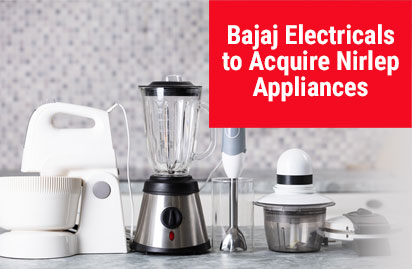Fertilizers are primarily chemical substances which are added to crops for increasing their productivity. Farmers use them on a day to day basis for yielding crops because these fertilizers comprise of necessary nutrients which are essential for plants. These nutrients include nitrogen, potassium and phosphorus. These fertilizers increase the water retention capacity of plants thereby increasing their productivity.
Types of Fertilizers
There are different types of fertilizers available in India for different kinds of uses. The categories have been described below:
- Organic and Inorganic Fertilizers
Organic fertilizers are made of natural, organic components. These are mainly manure, compost, or other animal and plant products and are a great source of nutrients. Organic fertilizers work slowly and on a long term basis and help build up the soil over time.
Inorganic fertilizers on the other hand comprise of chemical components which carry essential nutrients required for sustaining crops and yielding better output. For quick and short term plant growth, this is one of the best options available to farmers.
Nitrogen is a plan nutrient used for enhancing growth of crops. It is used during the middle stages of a plant’s lifespan for letting it continue growing larger and stemming new leaves. Both organic as well as inorganic fertilizers comprise of nitrogen.
Phosphorous is a necessary nutrient which is required by plants on a constant basis. Throughout their lifecycle, phosphorous helps strengthen the roots and stems of plants. Moreover, flowering, seeding as well as fruiting can be significantly improved with the help of phosphorous fertilizers.
Potassium helps plants grow stronger roots and it is also very helpful in protecting plants when they are deprived of other essential nutrients. Potassium is a necessary nutrient photosynthesis and has the ability to slow down any disease which may infect the crops. Potassium fertilizers have several more benefits and it entirely depends upon the manner of usage. It primarily protects as well as develops the crop to yield faster productivity.
Forms of Fertilizers
There are several forms of fertilizers. These include liquid, powder as well as granular forms. Liquid fertilizers are usually diluted with water and using them is similar to watering the crops with a hose pipe. However, powdered fertilizers also require water for its usage since they are mostly spread by hand and then watered down for higher rate of absorption. Lastly, granular lawn fertilizers can easily be smeared over the soil. The nutrients within these granules is soaked in by the crops with time, with subsequent watering.
Subsidies within the Fertilizer Industry
At present, the subsidies which the Government provides for the fertilizer industry, comprise of the following:
- The NPS(New Pricing Scheme)-III and Modified NPS(New Pricing Scheme) – III policies are followed at present for providing compensation of fixed cost as well as variable cost. For e.g. the cost of bag, water charges & electricity charges to continue till further orders for the crop, are covered under these schemes.
- The New Urea Policy 2015 is applicable over 25 gas based units.
- A Notification dated 17th June, 2015 is applicable for Madras Fertilizers Limited- Manali Southern Petrochemicals Industries Corporation (SPIC) Tuticorin and Mangalore Chemicals & Fertilizers Limited (MCFL).
The New Urea Policy (Applicable for 25 gas based urea units)
- The New Urea Policy-2015 (NUP-2015) was notified by Department of Fertilizers on 25th May, 2015, and effective from 1st June, 2015 up to 31st March, 2019, with the objective of maximizing the indigenous urea production, promotion of energy efficiency in urea production as well as rationalization of the burden of subsidies over the Government.
- According to the NUP – 2015, the previously set energy policy for the 25 gas based urea units which had been fixed have now been mopped up and are eligible for the concession rate on the basis of these revised energy policies. These norms were fixed for each group from 1st June, 2015 till 31St March, 2018 which would be the simple average of the pre-set energy norms of NPS-III and the average actual energy consumption achieved during the years 2011-12, 2012-13 and 2013-14 or the pre-set set energy norms of NPS-III, whichever is lower.
- In order to produce 100% re-assessed capacity (RAC), the 25 gas based urea units are entitled to acquire a total cost of production of urea, which includes the fixed cost as well as the variable cost.
- In order to produce beyond the RAC (Re-assessed Capacity), these units are entitled for their respective variable cost and a uniform per MT(Megatonne) incentive which is equal to the lowest of the per MT fixed costs of all the indigenous urea units subject to the import parity price and the weighted average of other incidental charges that is incurred by the government over the imported urea. However, according to a notification dated 7th April, 2017, a further amendment was incorporated for the production of urea beyond RAC during the years of 2016-17 such that the units were entitled beyond their respective variable cost and a uniform per MT incentive equal to the lowest of the per MT fixed cost of all indigenous urea units subject to the sum of import parity price, other incidental charges which the Government incurs on the import of urea and weighted average of Central Government levies of urea paid by the urea manufacturing units. Due to this amendment, it was decided that in the event of any fluctuation in Import Parity Price which could have an adverse impact on the production beyond RAC by the urea units, the Department of Fertilizers is authorized to undertake appropriate decisions in consultation with Department of Expenditure.
- The compensation for other variable cost e.g. the cost of bag, water charges & electricity charges and fixed cost are determined in accordance with existing provisions of NPS-III and Modified NPS-III.
- There are currently five units, namely MFL Manali, MCFL-Mangalore, SPIC Tuticorn, BVFCL Namrup-II and BVFCL Namrup-III which are not covered under this scheme because these units are not connected to a gas pipeline network in India. As per NUP 2015, Namrup-II and Namrup-III units of BVFCL are proposed to be closed and a newer and higher efficiency unit is to be installed, which shall be handled separately under the restructuring proposal. Till then, these two units shall work under the provisions of the Modified NPS-III.
For Naphtha based urea units
The three Naphtha based urea units are the Madras Fertilizers Limited Manali (CPSU), Southern Petrochemicals Industries Corporation (SPIC) Tuticorin and the Mangalore Chemicals & Fertilizers Limited (MCFL). These are governed by a Policy Notification dated 17th June, 2015, which allows the units to operate urea production using Naphtha as a feedstock up untill gas availability and connectivity to these three units is acquired.
This can either be through a gas pipeline or by any other means. The Naphtha based urea units are entitled to get subsidy as per the following conditions:
They shall be eligible based on the revised energy norms from the date of the notification. This would be the simple average of the previously set energy norms of the New Pricing Scheme (NPS) III and the lowest yearly specific energy consumption achieved during the years 2011-12, 2012-13 and 2013-14 or the pre-set energy norms of NPS III, whichever is lower.
The compensation available for other variable cost, for e.g. the cost of bag, water charges & electricity charges and fixed cost shall be determined according to the existing provisions of NPS III and Modified NPS III.
New Investment Policy – 2012
The Government further notified the New Investment Policy – 2012 on 2nd January, 2013 with the main goal of facilitating fresh investments and making India self-reliant with the reduction on the import dependency within the urea sector. The features of NIP – 2012 are given below:
- This policy only supports gas based plants.
- The policy has a structure of a flexible floor and ceiling price calculated at the delivered price of gas from US $6.5 to US $ 14/mmbtu (metric million British thermal unit).
- The floor price is determined at a Return on Equity (RoE) of 12% and the ceiling price at a RoE of 20%.
- For Greenfield and Brownfield Projects, the floor and ceiling price will increase in tandem with the increase in delivered gas price i.e. every USD 0.1/mmbtu increase in delivered gas price will increase the floor and ceiling by USD 2/MT upto the delivered gas price of USD 14/mmbtu.
- It supports the revival of closed units.
- It encourages investments by the Indian industry in Joint Ventures abroad in several resource rich countries
- The policy incentivizes the units to produce urea in a granulated or a coated/fortified form for improving the efficiency in the use of Urea with an additional amount of USD 10/MT (megatonne) allowed in floor and ceiling prices.
- For the units in the North Eastern states, the special dispensation regarding gas price that is being extended by Government of India and the State governments shall be available to new investments. Suitable adjustments will be made to the applicable floor and ceiling price in case the delivered price falls below USD 6.5 per mmbtu, subject to approval of Ministry of Finance.
Amendment in NIP-2012
As per a notification dated 7th October, 2014, the following amendments were made in the New Investment Policy–2012
- Only those units where production starts within five years from the date of this amendment notification shall be covered under the policy. The subsidy shall be provided only on the domestic sale at present for a period of 8 years from the date of start of production. Thereafter, these units will be governed by the urea policy prevalent at that time.
- In order to ensure the credibility of the project the proponents under NIP-2012 and for timely execution of the projects, all the project proponents will be required to furnish a Bank Guarantee of Rs. 300 crores for every project. Out of Rs. 300 crores, Rs. 100 crores of Bank Guarantee shall be released after the finalization of LSTK/ EPCA contractors and the release of advance to the contractor’s account. Further, Rs. 100 crores of Bank Guarantee will be released upon the completion of the equipment ordering and supply to the site or midpoint of the project cycle, whichever is earlier. Further, the balance of Rs. 100 crores of Bank Guarantee on completion of the project. PSUs are, however, exempted from furnishing a Bank Guarantee.
- A Committee of Secretaries consisting of the Secretary (Fertilizers), Secretary (Department of Expenditure), Secretary (MoPN&G), Secretary (Planning Commission) and Secretary (Agriculture) with Secretary (Fertilizers) as Chairman is constituted to take the decisions on the several issues which shall arise during the implementation of the NIP 2012.
Uniform Freight Policy
- The Department of Finance announced the uniform freight policy with effect from April 1, 2008 as per a notification dated July 17, 2008 with the sole objective of ensuring the availability of fertilizers in all parts of the country, especially remote corners of India.
- The slab-wise rates in respect of primary road movement for the year 2008-09 and escalated/de-escalated till the financial year 2015-16 have been notified by Department of Fertilizers, too.
- The Department of Fertilizers had also notified the Per Tonne Per kilometre rates till the financial year 2015-16 for road transportation in the case of secondary movement of fertilizers from unloading rake point to the retail point.
Phosphate Fertilizer Subsidies
1. Concession Scheme for P&K Fertilizers:
- The Government of India decontrolled all Phosphatic and Potassic (P&K) fertilizers namely DAP( Diammonium phosphate), MOP(Monoammonium phosphate), NPK( nitorgen, phosphorus, potassium) complex fertilizers and SSP(Single Super Phosphate) with effect from 25th August 1992 that were under the Retention Price Scheme (RPS) since 1977 except Urea which continued to remain under the RPS. The prices of phosphatic fertilizers remain high because subsidies were only retained in the Nitrogenous fertilizers (Urea) while the phosphatic fertilizers were decontrolled. Due to this, the production and consumption of nitrogenous fertilizers increased and the consumption of P&K fertilizers decreased causing severe imbalance in the consumption of nitrogenous, phosphatic and potassic fertilizers. To avoid further imbalance of the fertilization of the soil and the unaffordability of farmers because of the high prices of phosphatic and potassic fertilizers, the Government of India announced an ad hoc Concession Scheme for phosphatic and potassic fertilizers from 1992 to cushion the impact of the price hike with a view to encourage balanced fertilizer consumption.
- The objective of the Concession Scheme for P&K fertilizers is to provide P&K fertilizers to the farmers at affordable prices in order to increase the food productivity in the country through balanced use of fertilizers. This scheme also resulted in ensuring a reasonable rate of return over the investments made by entrepreneurs within the fertilizer sector.
- The Special Freight Subsidy Reimbursement Scheme was introduced in 1997 for the supply of fertilizers within the difficult areas of J&K and the North-eastern States.
- The MRP of SSP, that is to be declared by the respective State Governments up till 30th April, 2008, was announced by DOF at Rs. 3400/MT uniformly all over the country. w.e.f. 1.5.2008 till 30.9.2009 and the subsidy on SSP was decided by DOF on a monthly basis.
Coopertives for fertilizer manufacture
1. Indian Farmers Fertiliser Cooperative LimitedIFFCO is a Multi-state cooperative society engaged in the business of the manufacture and the marketing of fertilizers in India. The Headquarters of this Society is in New Delhi, India. This cooperative society was implemented in 1967 with 57 member cooperatives and as of today, it is the largest co-op in the world with a turnover on GDP per capita with around 35,000 member cooperatives reaching over 50 million Indian farmers. It has a 19% market share in Urea and a 29% market share in complex fertilisers (P2O5 terms), making IFFCO India's largest fertiliser manufacturer.
2. Indian Farm Forestry Development CooperativeIFFCO had further promoted a separate Multi-State Cooperative Society called the 'Indian Farm Forestry Development Cooperative Limited' (IFFDC) in 1993. The main goal of this society was the growth of the wastelands for tree plantation and enhancement of the socio-economic status of the rural population via sustainable National Resource Management. This was done in the following manner:
- IFFDC initially implemented afforestation and rural development projects in the States of Uttar Pradesh, Madhya Pradesh and Rajasthan to improve degraded land, generate employment and provide fuel and fodder. Afforestation in about 29,420 hectare wasteland was achieved through promotion of 152 villages as well. The PFFCS covered 19,331 members, of which around 38 % are landless and 51 % are small farmers. Further, the PFFCS have 32% women members.
- The area of operation of IFFDC is in the States of Uttar Pradesh, Uttarakhand, Madhya Pradesh, Rajasthan, Bihar, Jharkhand, Odisha, Chhattisgarh, Telangana, Karnataka, West Bengal, Haryana, Punjab, Tamil Nadu, Maharashtra, Kerala and Himachal Pradesh implementing various projects worth more than Rs. 18.10 crore.
- As of today, IFFDC is implementing around 28 projects on livelihood and Natural Resources Management in 9,495 villages across 9 States and Watershed Projects on 16,974 ha area. IFFDC has even developed 8,515 Wadis (families) under the Agri-Horticulture Programme in various States’ in partnership with NABARD. Under these projects, IFFDC is nurturing 1,715 Self Help Groups (SHG) with a total membership of 17,564 of which 95% are women.
- Furthermore, IFFDC has undertaken the Seed Production Programme on the farmer’s fields in the States of Uttar Pradesh, Punjab, Haryana, Rajasthan, Madhya Pradesh, Maharashtra and Karnataka to increase the supply of quality seeds.
- An area of 13,075 hectares was covered under the Seed Production Programme during 2017-18.
3. The Cooperative Rural Development Trust
- IFFCO promoted the Cooperative Rural Development Trust (CORDET) in the year 1979 for providing education and training to farmers. The CORDET units are set up at Phulphur, Kalol and Kandla areas.
- CORDET has demonstrated several farming system models for increase of the farm income through organized training and skill development programmes for the youth and the female population. Further it has demonstrated crop production system, dairy, balanced fertilization, use of bio-fertilisers, bee-keeping, pisciculture, computer use, screen printing, welding, tailoring and embroidery, adult education programmes, fruits and vegetables preservation etc. at the Phulpur and Kalol units.
- For increasing the microbial activities in the soil, CORDET increased the production capacity of liquid bio-fertilisers at the Kalol Unit from 1.5 lakh litres to 4.75 lakh litres per annum.
- Integrated Rural Development Program (IRDP) has been implemented in 14 villages. Several social and promotional activities like construction of community centres, drinking water facility, tree plantation, soil testing campaigns, supply of cattle feed, promotion of vermi compost, mini-kit distribution (CIP) etc. were undertaken in these villages.
4. IFFCO Kisansewa TrustThe IFFCO Kisansewa Trust is a charitable organization formed from joint contributions from IFFCO and its employees. This organization has undertaken several activities to assist the poor and needy farmers affected by natural calamities like earthquakes, floods, Tsunamis etc. This also extends helping hand to the farmers in distress due to bad weather.
The Trust expanded its scope by providing Financial Assistance to the farmers living below the poverty line for their critical medical treatment and education scholarship for higher studies to the children of poor farmers.
Australian Specialist Phosphate Fertilizer provider plans to set up Soil Testing Business across India through Joint Venture/Franchise






